"I can see clearly now, the rain is gone. I can see all the Popsicles in my way." Alternative Lyrics from my childhood.
I'm listening as hard as I can, but I cannot hear laughter in the rain. Not a single giggle. Not even a snicker. Yes, I'm stuck in the 70's music decade.
It rained, again, early last week here in Northern California. These drops are on my honeysuckle plant. Sigh. I really love rain. No, like, I really love rain. But I gotta say, I'm not too happy with how the torrential downpour has destroyed some of my "drought tolerant" plants! Lots of my feather grass needed replacing and a few other plants too. But at least I got out to practice shooting rain drops. It turns out in order to get a really great photo of water drop, most of the macro photographers I follow online will do it "in studio" with lighting, tripod, maybe an extension tube. Me? I can't be bothered. I just use the lighting nature gave me, and no tripod which means, I have to be absolutely STILL. That is a challenge for a Lymie with some minor tremors and balance issues. I mean, you wouldn't know I had these issues if you saw me, but try taking a shot that depends completely on being absolutely still and you will find out just how much tremor in you from Lyme & Co. Plus in order to get close to the the subject, you need to manual focus rather than depend on the auto focus system. That means, absolutely no forward or back movement. All a challenge for me! Some day, I'll set up a studio and be professional. Or not.
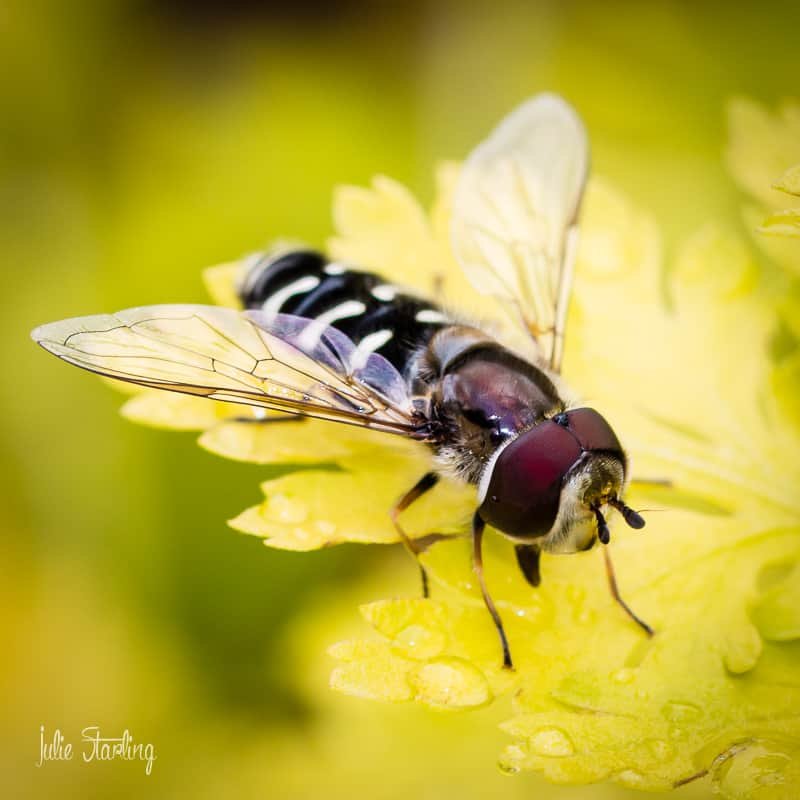
Hector the Hoverfly came for a visit yesterday. This is my first time catching a male (eyes touch in the center) with my camera. I almost always find females (eyes do not touch in the center). As always, hoverflies are fantastic pollinators for your garden. They are super friendly with humans and pose easily for the camera. Hector was looking for flowers on the feverfew he stood upon. They have yet to bloom, sadly for poor Hector.
Hector's particular species, Scaeva pyrastri, aka, the pied hoverfly, have 3 pairs of white comma markings on its back. This species is present in Europe, Near East, the East Palearctic ecozone and the Nearctic ecozone. Where the heck are those last two zones? The East Palearctic zone consists of Europe, Asia, Himalayas, North Africa while the Nearctic ecozone is North America, Greenland, Central Florida, and parts of Mexico. Geez! Why didn't they just say so? Damn science for making me learn new words!
Speaking of science, Someone asked on social media why there's a March for Science. I don't remember ever having such a march. I guess I never dreamed that we'd have to stand up for facts. But having a simpleton who wouldn't know a scientific fact if it slapped him in the face who's leading the free world with an administration of greedy muttonheads is an imminent threat to the proliferation of human life--thus the call to march for science. I would have marched, if I weren't so sick from an illness that rose from corporate greed and corporate influence on government policy. Scientists rock.
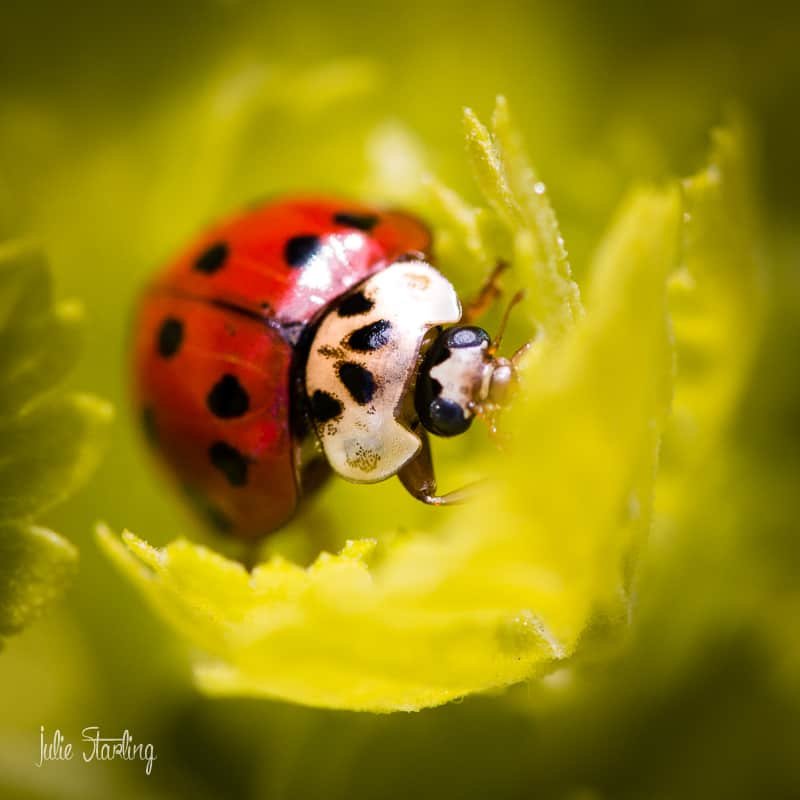
Last year I had to buy a bunch of these ladies to help with pest control and all they did the first few days was shag. It was embarrassing, like a regular ladybird brothel in our garden. Here's Hilda, a descendant from last year's shag-fest, showing up on my Fever Few plant. I caught her cleaning her mouth. She must have just eaten something really delicious. I hope it's one of those pests on my Guara that are bugging me. I'm still waiting on warmer weather to hatch the mantids. It's still quite cold in Santa Cruz Mountains Obviously quite full, she turned her back to me to take a nap. Get back to work! No sleeping on the job!
Hilda hides her head in shame after piggin' out. It's Thanksgiving in April for Hilda! Meanwhile, who knew lady beetles had hair on their butts? I'm thinkin' she needs to book an appointment for a Brazilian wax job. Or at the very least, a good pair of pluckers. Unless boy ladybirds like their ladies au naturelle. Either way, it may be cute but it's no comparison to a Siberian fuzzy set of jodhpurs. Hilda's all, "Talk to the beetle butt, lady, cuz these antennae ain't listenin'." Whatever little lady!
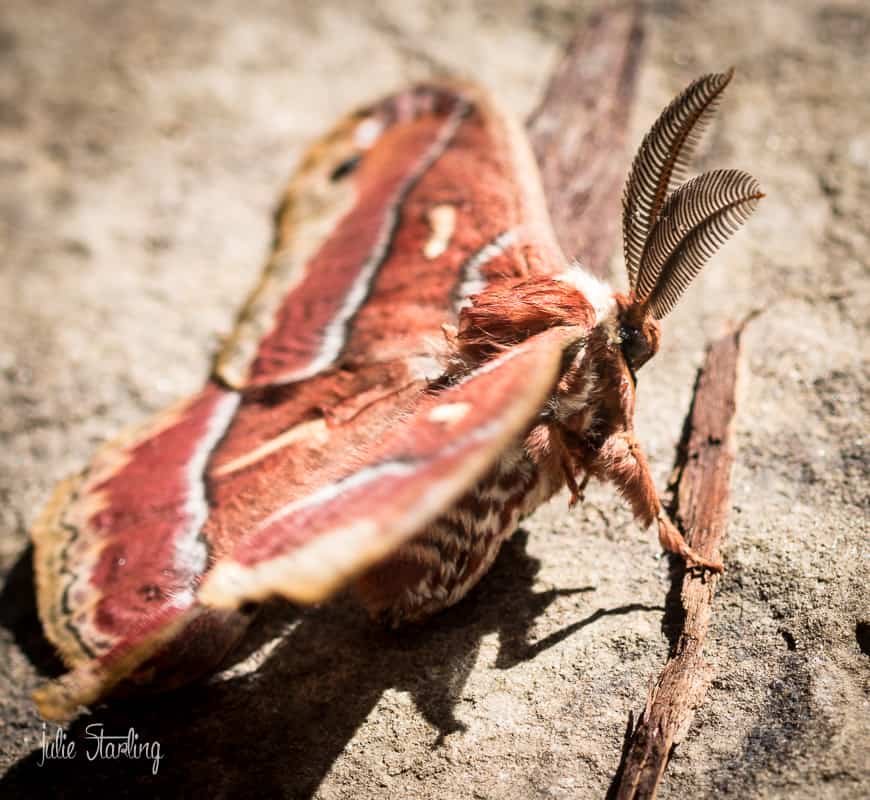
And finally, Mr. Wild Dingo came across Ernie, the Ceanothus Silkmoth (Hyalophora euryalus) in this photo above, while hosing off the dog porch. He accidentally soaked poor Ernie, so I promptly move him out of the puddle to a dry spot. These guys are rare. We've never seen one on our property. Last spring, we planted a ton of various types of Ceanothus all over the property, so it makes sense Ernie would show up as the larvae live and feed on Ceonothus, and other plants, such as manzinita, mahogany and laurel sumac. Of the Saturniidae (silk moth) family, this particular moth is rarely seen as it has incredibly short life span of about a week. Their cocoons are more noticeable, the silken armor large and tough. There are 65 species of silk moths in North America (2,300 worldwide), mainly on the West Coast from British Columbia to Baja California.
Mr. Wild Dingo was sad to hear that their mouths are atrophied and they do not feed. But he brightened up when I told him that their main goal as adults is to look for love and get down. If you can't eat, you gotta find your kicks, right?
Ernie's wingspan is 5” & those huge feathered horns help him track a female as far as 3 miles away. The antennae act like a net that plucks a single molecule of scent from the air to find the female at seemingly impossible odds. The females live for 2-3 days and don’t fly until they’ve been knocked up. Instead, they stay hidden from predators & release pheromones so the male can find her. Once a pair finds each other, they will shag for a full day! It’s no wonder the male dies shortly after that kind of endurance. The female then finds some nice woodland & scatters 400 eggs around various shrubs, spreading a few eggs per shrub, giving the best chance at survival. The cocoons have numerous predators such as Woodpeckers, Jays & other rodents that can poke through the tough silk armor. I am lucky to have seen Ernie and appreciate his short time on this earth. He wasn't too happy with me, he literally ran for cover under a jasmine plant, fearing I was a predator. I left him alone so he could recover from the shock of being sprayed & handled. I saw him fly away 15 minutes later. I hope he found love.
Life is short! Take your last breath shagging!
Note to Rottrover: I will do a large photo of the garden this year again, as I did last year, but I'm going to wait until most of it is in full bloom. It's still cold and lots of things are struggling to bloom. I have other photos from last year in this secret link which will self destruct after a week. I don't want to leave it up. So let me know if you saw it. Things are still filling in but they are getting there.


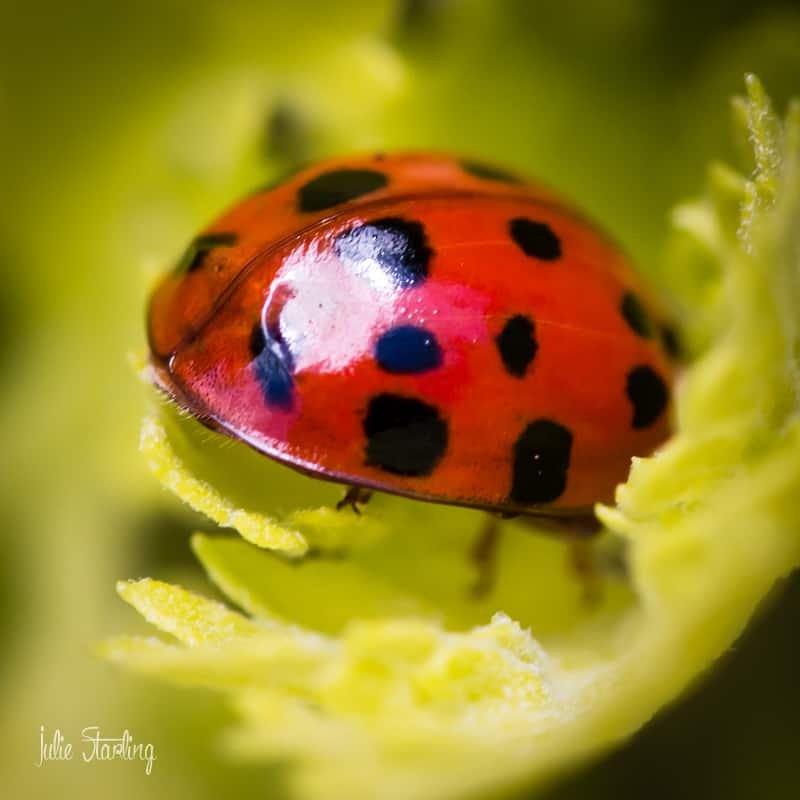
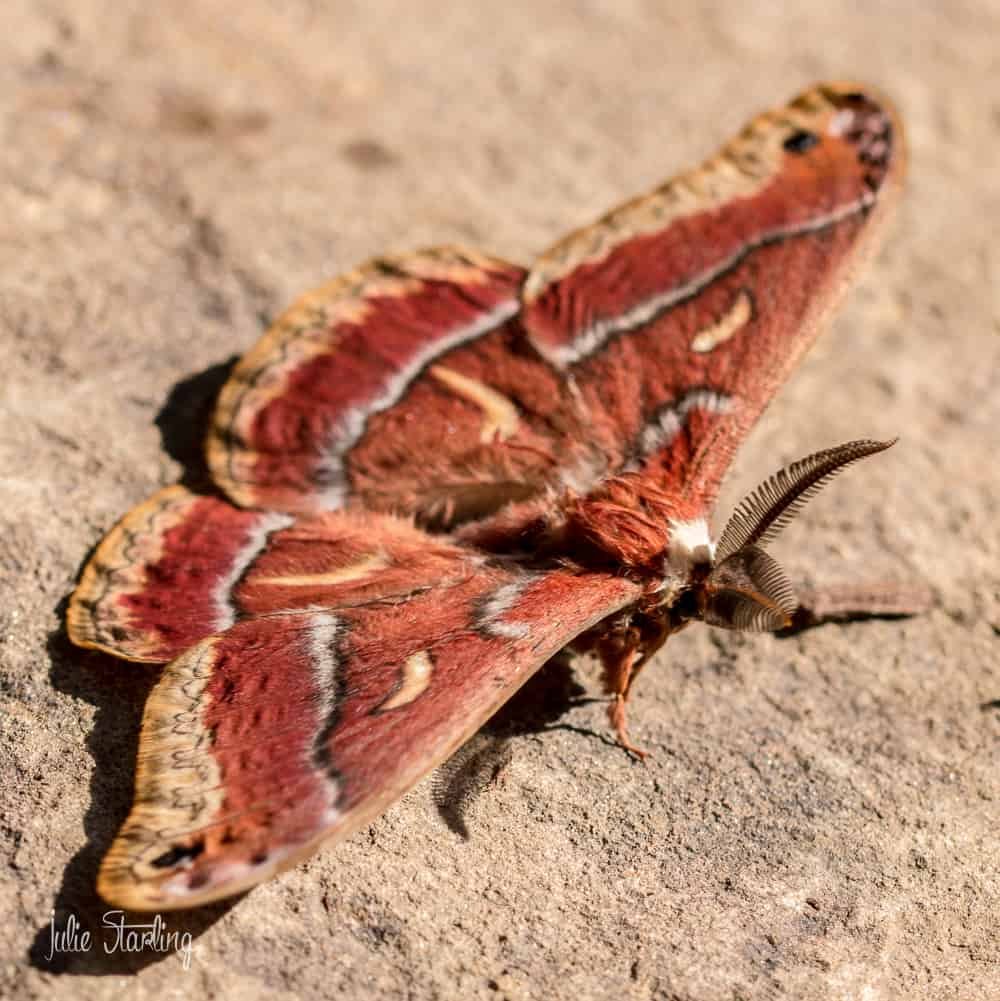
The raindrops and insects are fab. Thanks, too, for the garden shots. You can take them down now. 😉